Neutronic analysis of Indian helium-cooled solid breeder tritium breeding module for testing in ITER
2022-07-13SWAMIDeepakSHARMADANANICHAUDHARISRINIVASANandRajeshKUMAR
H L SWAMI,Deepak SHARMA,C DANANI,2,P CHAUDHARI,2,R SRINIVASAN,2 and Rajesh KUMAR,2
1 Institute for Plasma Research,Gandhinagar 382428,India
2 Homi Bhabha National Institute,Anushaktinagar,Mumbai 400094,India
Abstract India has proposed the helium-cooled solid breeder blanket concept as a tritium breeding module to be tested in ITER.The module has lithium titanate for tritium breeding and beryllium for neutron multiplication.Beryllium also enhances tritium breeding.A design for the module is prepared for detailed analysis.Neutronic analysis is performed to assess the tritium breeding rate,neutron distribution,and heat distribution in the module.The tritium production distribution in submodules is evaluated to support the tritium transport analysis.The tritium breeding density in the radial direction of the module is also assessed for further optimization of the design.The heat deposition profile of the entire module is generated to support the heat removal circuit design.The estimated neutron spectrum in the radial direction also provides a more in-depth picture of the nuclear interactions inside the material zones.The total tritium produced in the HCSB module is around 13.87 mg per full day of operation of ITER,considering the 400 s ON time and 1400 s dwell time.The estimated nuclear heat load on the entire module is around 474 kW,which will be removed by the high-pressure helium cooling circuit.The heat deposition in the test blanket model(TBM)is huge(around 9 GJ)for an entire day of operation of ITER,which demonstrates the scale of power that can be produced through a fusion reactor blanket.As per the Brayton cycle,it is equivalent to 3.6 GJ of electrical energy.In terms of power production,this would be around 1655 MWh annually.The evaluation is carried out using the MCNP5 Monte Carlo radiation transport code and FEDNL 2.1 nuclear cross section data.The HCSB TBM neutronic performance demonstrates the tritium production capability and high heat deposition.
Keywords: HCSB,TBM,tritium,nuclear heat,ITER
1.Introduction
India is developing a tritium breeding blanket for self-reliance in fusion reactor fuel supply [1-4].The functions of blankets are tritium breeding,heat removal and radiation shielding.Tritium breeding maintains the supply of fuel in the reactor and deposited heat removal through coolant is converted into electricity [5-7].The functions make the blanket a prime component of fusion reactor sustainability.The blankets are designed with a combination of certain tritium breeding materials,i.e.solid and liquid breeder materials.The design depends on the functional requirement of the blanket for the fusion reactor.The breeding blanket concepts such as the helium-cooled solid breeder (HCSB),lead-lithium-cooled ceramic breeder (LLCB)and helium-cooled dual breeder (HCDB) blanket are under the design and development phase[7-11].Every blanket design has its own functional novelty.The helium-cooled solid breeder is a widely accepted concept for breeding blankets [12-15].
The helium-cooled solid breeder concept has the Li2TiO3ceramic as a tritium breeder.Lithium in the ceramic(Li2TiO3)produces tritium through the following reactions:

Reaction (1) shows tritium production through7Li.The occurrence of reaction(1)requires neutron energy higher than 2.45 MeV.The cross section plot of the reaction is shown in figure 1.The cross section is maximum at the neutron energy of 6 MeV [16].This reaction is one reason for lithium being established as a candidate for tritium production in the fusion reactor.Natural lithium has a high abundance of7Li.Reaction(2) represents tritium breeding through the6Li isotope.The cross section of the reaction is also shown in figure 1[16,17].It is very clear from the occurrence probability of the reaction that it can even happen at the thermal energy and the cross section is huge for thermal or slow neutrons.The benefit of this Li6reaction is that tritium can be produced in thermalizing zones inside the fusion reactor and the blanket thickness can be increased.It is a relief that the reaction produces a self-sustainable fuel supply system for the fusion reactor.
In order to produce the self-sustainable tritium supply system,the loss of neutrons cannot be contemplated in the fusion reactor.However,it is not possible to utilize all neutrons of the fusion reactor because of the presence of other controlling and diagnosing devices in the system.The coverage of the tritium breeding blanket cannot be 100%.It could be maximized up to 70%-80%.Therefore,it requires the neutrons in the blanket to be enhanced through some process to maximize the tritium breeding.Few elements,such as beryllium,lead,zirconium,bismuth,etc have the properties of multiple neutrons through nuclear reactions.The reactions of beryllium and lead are shown below.

The (n,2n) reaction always requires threshold neutron energy to take place;it is 2.7 MeV for beryllium and 7.7 MeV for lead.The requirement of threshold energy makes the neutron multiplication specific,which needs to be tackled during the design of the blanket.The HCSB blanket has beryllium as a neutron multiplier material.
The energy deposited by neutrons in the blanket needs to be extracted for electricity production through coolant flow.High-pressure helium is used as a coolant in the solid breeder blanket.
ITER is an experimental fusion reactor to demonstrate nuclear fusion sustainability and also provides the platform to test the tritium breeding blankets concept for futuristic fusion power plants.ITER is designed to generate the 500 MW D-T fusion power.It will demonstrate power plant sustainability for 400 s [18].
Keeping all points of concern in reference,a design for the Indian HCSB blanket module for testing in the ITER is developed and supported by rigorous neutronic and engineering analysis.
The scope of the work is to present the neutronic design calculation of the Indian HCSB blanket module for testing in ITER.The HCSB design descriptions along with the analysis methodology are included here.The nuclear analysis results are elaborated in detail for the realization of functional requirements and design support.
2.Description of HCSB blanket module for ITER
The HCSB test blanket module (TBM) designed for ITER testing has the function materials such as Li2TiO3and beryllium.It is structured using Indian reduced activation ferritic martensitic steel (RAFMS) material and cooled using highpressure helium flowing in channels in different components of the blanket.The module has the external dimensions of 167 cm (poloidal)×46.2 cm (toroidal)×52.5 cm (radial).It is made in a submodular structure for efficient heat extraction.The module has six submodules as shown in figure 2(a).The submodule has three parallel zones of Li2TiO3and four zones of beryllium;all are partitioned using the RAFMS plates.The plates have cooling arrangements to extract the heat from entire regions.
The vertical thickness of the Li2TiO3in each zone is around 20 mm,whereas the beryllium is 33.875 mm.The detail of the submodule is shown in figure 2(b).The plasmafacing first wall has a radial thickness of 2.8 cm.There are 80 channels with 16 parallel flow circuits in the first wall.The channels have a hydraulic diameter of 15 mm.The rear side of the module has helium channels with a combination of backplates to provide proper supplies to all submodules [19,20].
3.Nuclear analysis methodology
A neutronic model is prepared using the details of the HCSB test blanket module and it is incorporated in the ITER C-lite model.The ITER C-lite model is a 40-degree sector model that has the ITER machine’s standard details.The symmetrical boundary condition is applied on both the toroidal sides of the model.The geometrical and material details are given in the model as per ITER [21,22].There is a recent upgrade in the ITER MCNP model called the C-model,which is an advanced and very heavy model [23].The C-lite model is used here in the calculation to reduce the run time,along with an entire ITER sector model.The HCSB TBM material details are given in table 1.Materials are included in the model with impurity details.The fusion neutron source with the angular and spatial distribution of the ITER neutron source available in the MCNP-based C-lite model has opted for the calculations.The neutronic models of ITER and HCSB TBM are given in figures 3 and 4,respectively.The TBM is placed at the equatorial port of the ITER,as shown in figure 3.It also shows the distance of the TBM from the ITER machine centre and figure 4 represents the calculation model of the HCSB TBM.It is a heterogeneous model with all the geometrical and material details.The neutronic responses such as tritium production density,radial flux profiles,and heat density profiles,etc,belong to submodule 3,as shown in figure 4.The region for nuclear responses is marked in figure 4 from where all estimated responses are reported.
The calculation is performed for the tritium breeding inside the Li2TiO3zones and beryllium zones using the track length estimator function for reaction rates.The6Li enrichment in the Li2TiO3has opted 60%.The reaction number 105,205(205 is also equivalent to reaction number 33 for7Li)is considered to estimate the6Li(n,t)and7Li(n,n’,t)reaction rates,respectively.For the beryllium (n,t) reaction,reaction number 105 is used.The reaction rate depends on the probability of the reaction.The reaction probability data is required for the estimation of the particular reaction in the radiation transport code MCNP [24].The reaction cross sections data chosen for the calculations are from FENDL 2.1 nuclear cross section data libraries [25].The heat density inside all material zones is estimated through the track length estimate of energy deposition.It includes the reaction threshold as well as releasing energies.It contains the heating through both neutron and photon.The neutron flux and energy spectra in breeding zones are estimated using the track-length estimator of flux in a certain volume.
A hundred million particles are tracked for the estimation of the nuclear responses in the Monte Carlo radiation transport code MCNP.The statistical errors in all simulated responses are less than 5%.
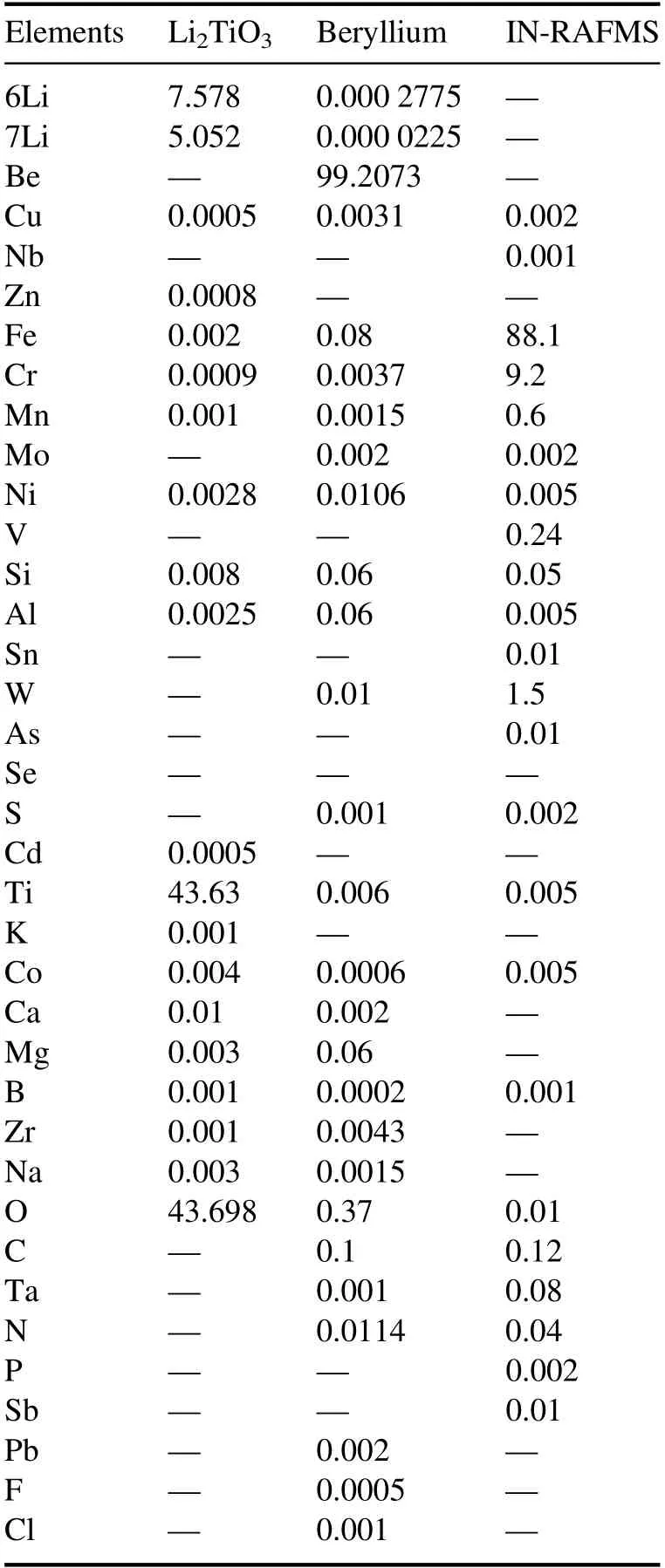
Table 1.HCSB TBM materials’ elemental composition in weight (%).
4.Neutron flux
The neutron flux is estimated from the TBM first wall to the backplate.The attenuation of the flux is shown in figure 5.The flux at the front zone of the breeding module is around~1.88×1014n cm-2s-1.It goes down inside the TBM and reaches around 3.5×1013n cm-2s-1at the rear side.The 40 cm breeding zone attenuates only ~5.3 times the total flux.This is because the interaction happens through(n,2n)and(n,n’),(n,t) reactions.The absorption reaction is compensated by the (n,2n) neutron multiplication reaction.It is also observed that while attenuation does not occur much in the total flux,the energy attenuation happens.The neutron energy spectra at various locations inside the TBM are shown in figure 6.The 14 MeV flux level goes down drastically,as shown in figure 6.The energy spectra represent the interactions and energy attenuation more clearly.
5.Tritium production
Tritium production is one of the main functions of the blanket and through the self-sufficiency of tritium,it provides feasibility to the fusion power plant concept.Tritium is not available naturally.Breeding in the heavy water fission reactors is also not significant and it may not be able to maintain the supply for big nuclear fusion-based power plants.The analysis provides an estimation of the tritium in the test module of the HCSB blanket,placed inside the ITER nuclear environment.The tritium estimation is made in Li2TiO3and beryllium materials.It is estimated separately for both lithium isotopes.The tritium produced in the HCSB TBM is 1.45×1017tritons/s.In a full power day (24 h of continuous operation) it can produce 62.4 mg.For the ITER pulse mode operation,considering the 1400 s dwell period between successive 400 s burn plasma pulses,there will be 48 pulses in a day,and the tritium production will be around 13.9 mg.Figure 7 shows the radial tritium production density(TPD)profiles in the ceramic material and figure 8 shows the tritium production in beryllium.TPD is tritium produced per unit volume of breeding materials.The results of TPD can be understood through the analogy of neutron energy spectrum and tritium production cross section for materials.The total flux reduces with radial depth and it does soften the energy spectrum.
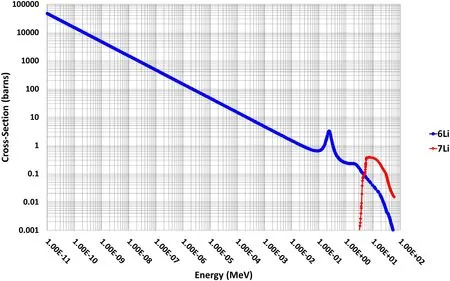
Figure 1.Cross section of lithium for tritium production reactions.
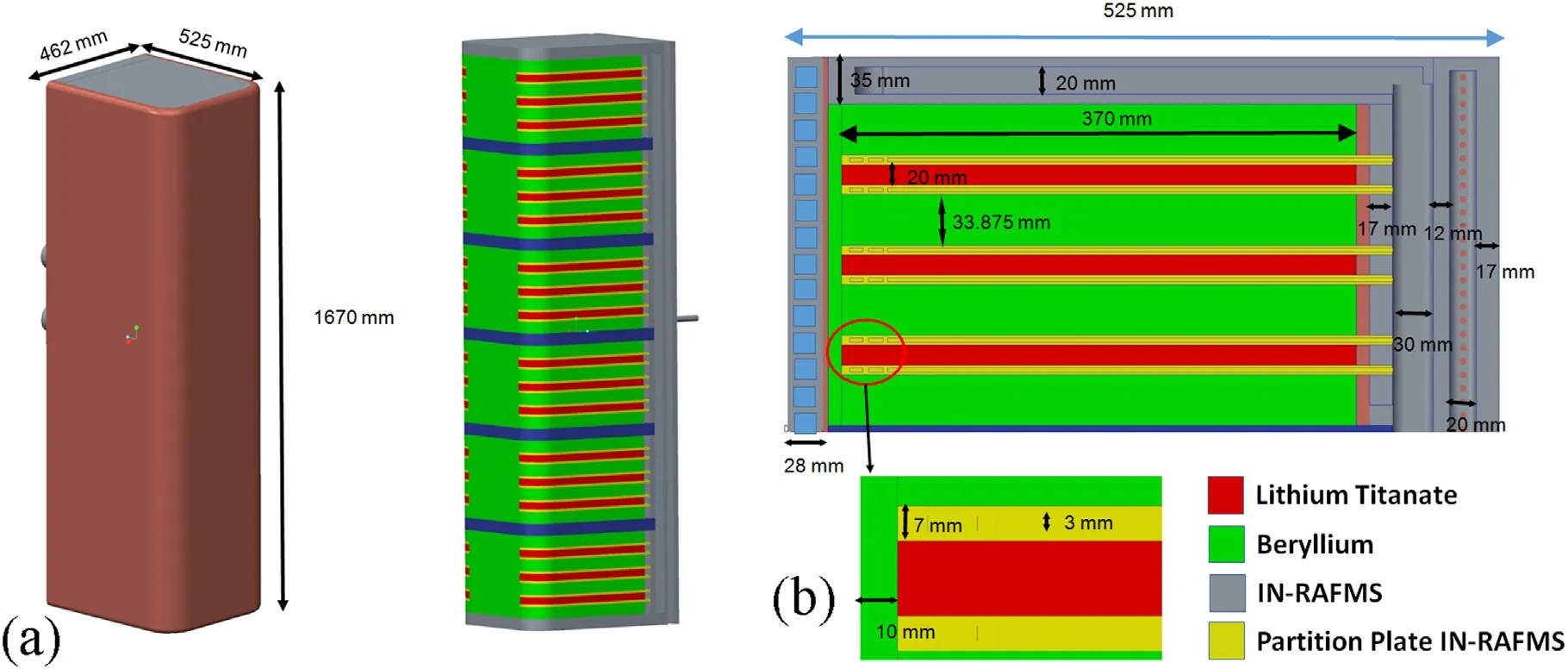
Figure 2.(a) HCSB TBM model,(b) HCSB TBM submodule.
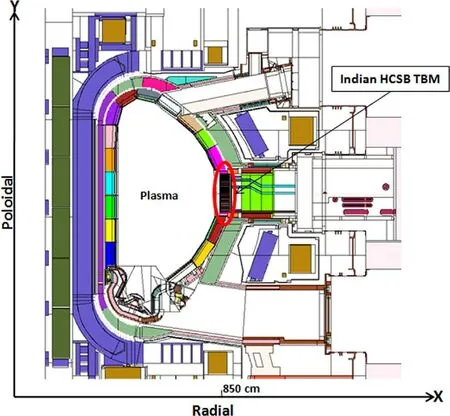
Figure 3.ITER C-lite model with HCSB TBM.
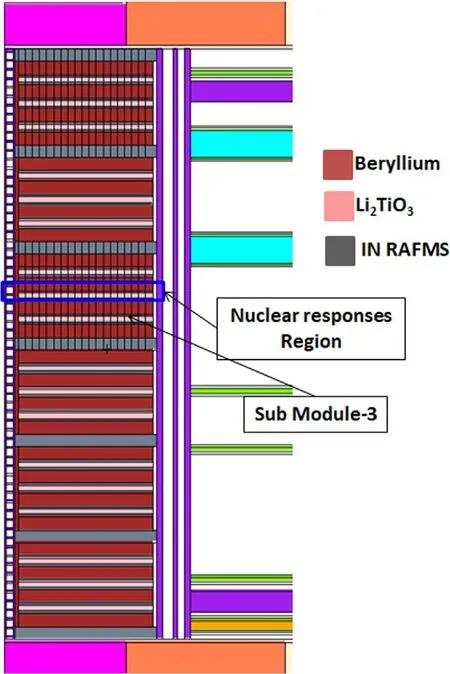
Figure 4.Neutronic model of HCSB TBM.

Figure 5.Radial attenuation profile of neutron flux.
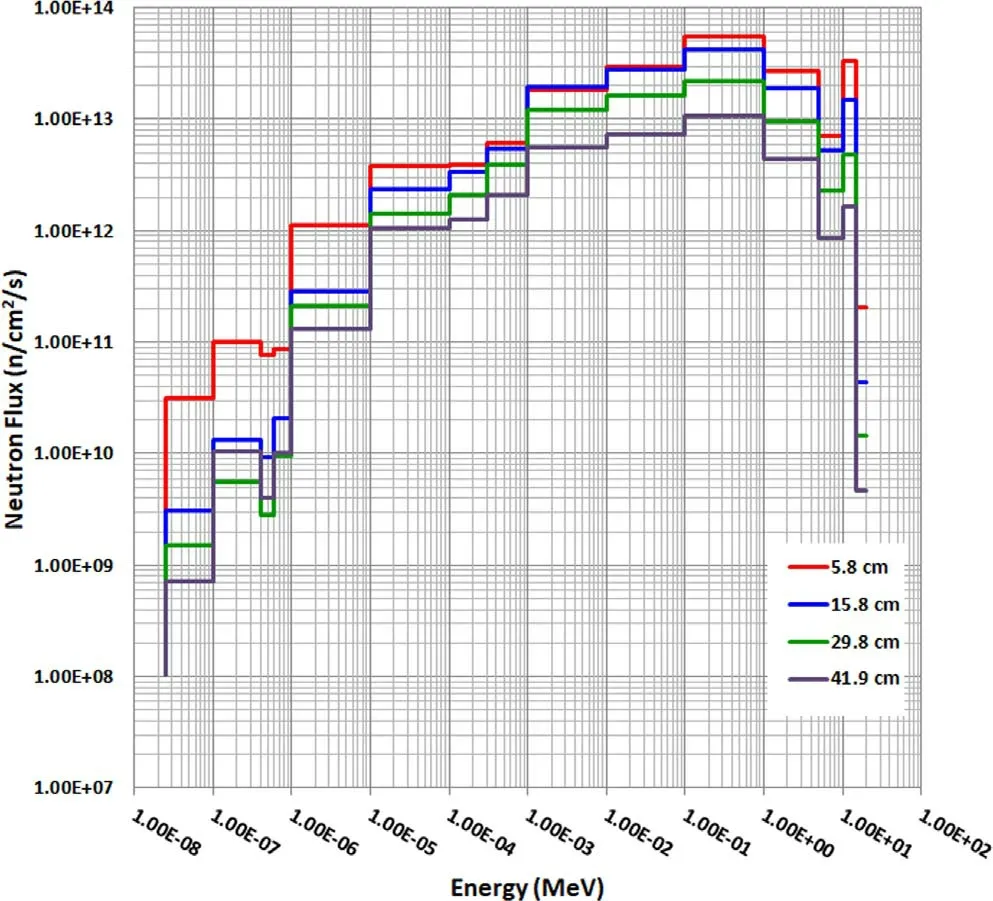
Figure 6.Neutron spectra inside HCSB.
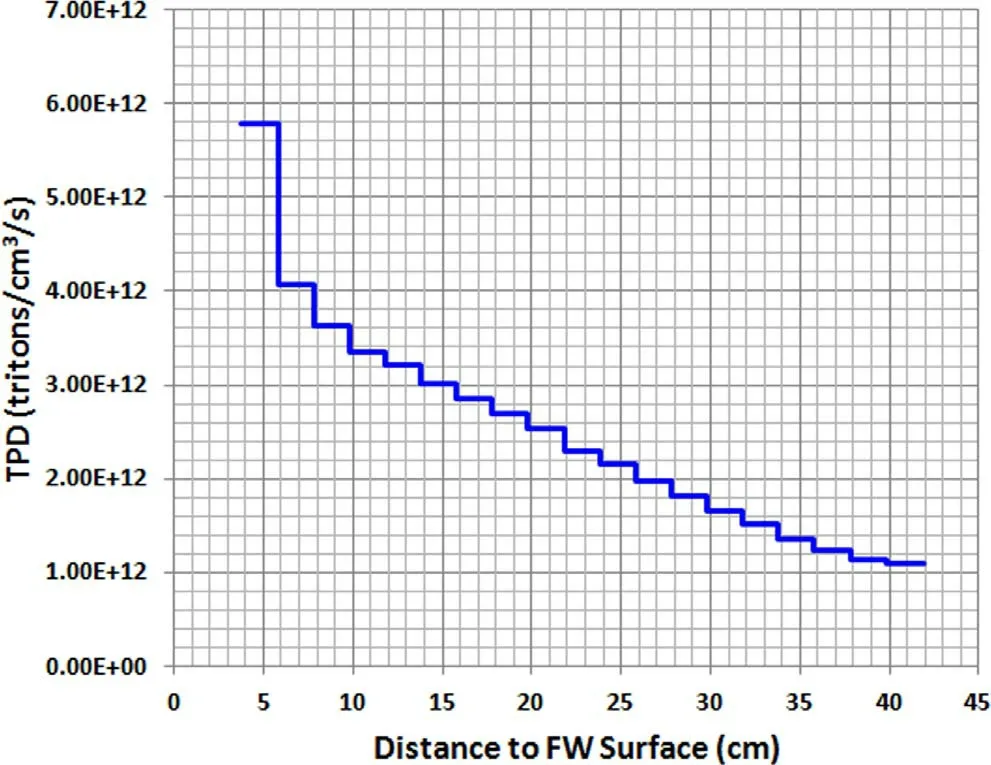
Figure 7.Radial profile of tritium production density in ceramic breeder.
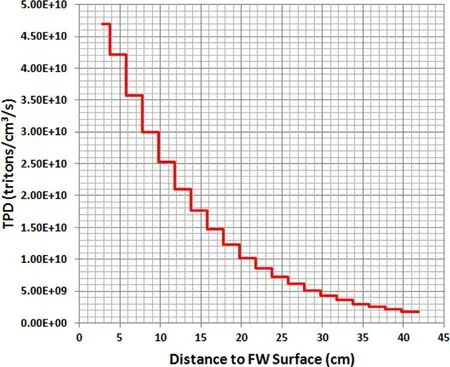
Figure 8.Radial profile of tritium production density in beryllium.
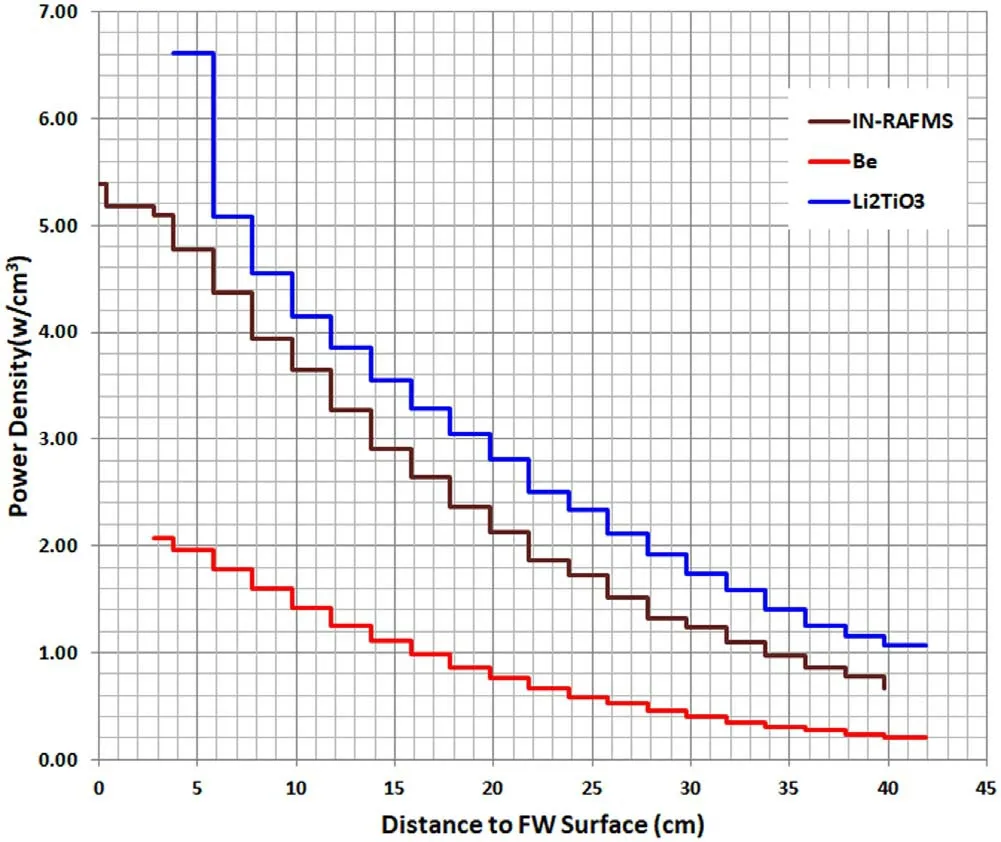
Figure 9.Radial profile of nuclear heat deposition density in TBM.
Moreover,the calculation of the tritium breeding ratio in this small test blanket module is done using plasma sourcefacing surface area and the neutron wall load.It is found that the localized tritium breeding ratio for this design is around 1.05.It can be larger for the fusion reactor where the full plasma-facing area is covered by the tritium breeding blanket and also for larger blanket modules.The estimated ratio for the test blanket module is a bit smaller because it has more structural material due to the compact design of the module for ITER port fitting.However,it is more than 1,which is a good sign regarding tritium fuel management.
6.Nuclear heat deposition
A nuclear reactor or power plant works on the conversion of thermal heat to electricity.Thermal heat deposition is the main parameter for reactor performance.It represents the amount of thermal heat which can be converted into electricity.The estimation of thermal heat in a fusion reactor blanket is also equally important.It will showcase the fusion power conversion to electrical power.The fusion power will be deposited in the blanket through neutron interaction and attenuation.The deposited thermal power will be removed through an efficient cooling circuit and converted into electricity.
The heat deposition in the small test module of HCSB is estimated and it is around 0.47 MW.The calculation covers heat deposition from neutrons and photons.The total heating in the Indian RAFMS material is mostly dominated by photon heating,which is around 82%.In beryllium,photons contribute ~26% and it is around ~13% in Li2TiO3.
The total heat,for an entire day of operation of ITER with pulse mode,will be equal to 9 GJ of energy.The amount of power deposited in the HCSB TBM for an ITER day of operation is huge.It will be equivalent to a 189 kW electrical power system,considering the 40%efficiency of the Brayton engine,as per [26].For a day of operation,it will be around 3.6 GJ of energy.The radial profile of heat deposition density in specific materials is given in figure 9.The heat density in the ceramic material remains high due to the high reaction probabilities.RAFMS also attenuates more neutrons due to the higher interaction cross section of iron,magnesium,chromium,etc elements for neutrons.Therefore,it has higher energy deposition.
7.Conclusion
The performance of the Indian HCSB tritium breeding blanket module,for testing in ITER,is evaluated using the Monte Carlo radiation transport simulation code,MCNP.It is found that the test module performs well in the ITER neutron environment.The tritium breeding in a continuous full-power day of operation of ITER will be around 62.4 mg.The estimated ratio for this small module is around 1.05,which is higher than 1.An important feature in the HCSB design is that the tritium breeding density does not reduce much from the front area to the rear area.In the rear region,it is around 1.1×1012tritons cm-3s-1whereas at the front region it is around 5.8×1012tritons cm-3s-1.This is due to the good distribution of beryllium as a neutron multiplier in the module.The radial flux profile and spectrum showcase the opportunity to enhance the breeding through the Li6isotope enrichment in the blanket rear zones.The power disposition in the blanket features the energy conversion feasibility through the blanket module.The total power deposition in a small test blanket module is around 0.47 MW.For a day of operation,it is huge,around 9 GJ,which demonstrates the scale of power that can be produced through a fusion reactor blanket.Considering the Brayton cycle,it can be equivalent to 3.6 GJ of electrical energy.If all day operation of ITER is assumed,a small blanket module can generate an electric power of around 1.6 GWh annually.Further,optimizations in the design of the Indian solid breeder blanket are in progress.
The neutronic assessment shows that the current HCSB design for a test blanket module is capable of featuring all the desired functions for a fusion reactor breeding blanket and that it could be a good candidate for future power plants.
Acknowledgments
Mr H L Swami pays sincere tribute to the late Dr R Srinivasan.He was a good mentor and supervisor.His contribution towards the development of Indian nuclear fusion research always remains with us.
ORCID iDs
杂志排行
Plasma Science and Technology的其它文章
- Recent progress on the J-TEXT three-wave polarimeter-interferometer
- Design of the stripping unit and the electromagnetic analysis unit for the E//B NPA on HL-2A/2M tokamak
- Space-resolved vacuum-ultraviolet spectroscopy for measuring impurity emission from divertor region of EAST tokamak
- Development of a combined interferometer using millimeter wave solid state source and a far infrared laser on ENN’s XuanLong-50(EXL-50)
- Bench test of interferometer measurement for the Keda Reconnection eXperiment device (KRX)
- Neutron yield measurement system of HL-2A tokamak
